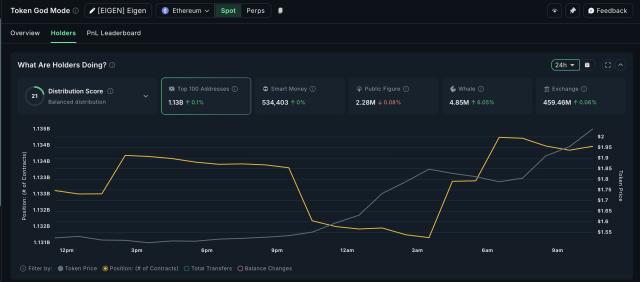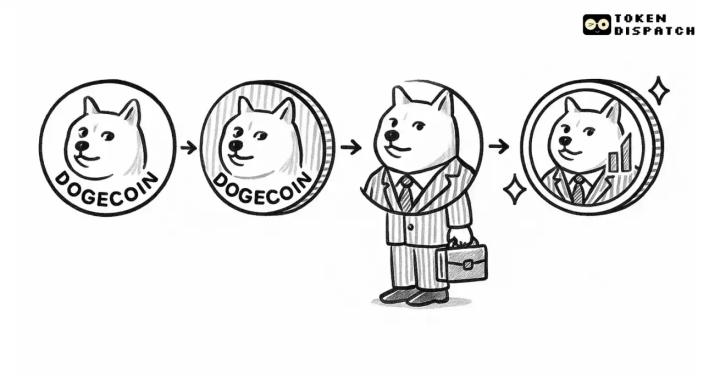In the fierce cryptocurrency exchange market, while most platforms are still engaged in an arms race to list the most coins and maximize leverage, Flipster, an emerging derivatives exchange, has chosen a different path. In this exclusive interview with Flipster's product manager, Dynamic Zone delved into what he calls a "new generation trading platform." In this conversation, he revealed Flipster's unique positioning, centered around a "zero friction experience," and explained why they firmly believe that an exceptional user experience is the true "alpha" that will differentiate them in the future market.
Youngsun, Head of Product at cryptocurrency exchange Flipster, previously led product development at major Web2 companies, including Uber, a shared economy giant, and Coupang, a major Korean e-commerce and logistics company. This article explains how Youngsun incorporated his experience developing products at traditional large companies into the creation of Flipster, while maintaining his user-first product philosophy.

What is a "next-generation exchange"? Understanding Flipster's core value through its food delivery platform
Dynamic Zone: For readers who may not be familiar with Flipster, could you first explain what it is? What makes it unique among cryptocurrency exchanges? What core pain points are you solving for today's traders?
Youngsun: I usually explain Flipster in one sentence: We are a "next-generation trading platform" built for cryptocurrency traders. This means we are more than just a marketplace that connects buyers and sellers. Traditional exchanges are like early food delivery apps: they simply provide a platform for restaurants to list their products, but the restaurants have to figure out the delivery service themselves. The entire experience is fragmented.
In contrast, the new generation of delivery platforms not only provide ordering services but also integrate their own delivery teams to ensure a seamless process from order to delivery. I believe that trading platforms are undergoing a similar evolution. In the past, platforms simply opened their doors and said, "Hey, come in and trade freely," but ignored the friction of the transaction process.
At Flipster, we deeply care about the trader experience. We strive to ensure that traders can execute their desired trades at their desired prices and sizes, within our capabilities. This is the key difference between us and the traditional all-to-all order book model. We don't just bring users together; we actively create conditions for them to "better meet."
All of this is possible because the Flipster team is comprised primarily of seasoned professional and quantitative traders. Our extensive trading experience on top exchanges has given us a keen and profound understanding of the real pain points traders face and the current market gaps. This is precisely the leading advantage we possess in building a next-generation trading platform.
BlockTempo: You mentioned the "new generation trading platform". If you were to summarize its essence in one sentence, what would it be?
Youngsun:
“From a user perspective, it’s about getting your trade executed in the simplest, most seamless way possible without having to go through all the hassles that existing cryptocurrency exchanges impose on you.”
Just like the evolution of a product, it usually becomes simpler, but the tasks it can handle become more complex. For users, Flipster aims to be the simplest and most convenient platform, while allowing them to complete complex transactions.
The first "zero spread" trading, what are the real benefits for traders?
Flipster claims to be the first exchange to offer "zero spread" trading, a bold statement in a market where spreads are already the norm. Can you explain what this means in practice? What are the key benefits for users ?
Youngsun:
Let me explain it in simple terms. We create a special trading structure that allows liquidity providers to offer the exact same quote at the best bid and best offer. This allows us to achieve "zero spread" trading.
What does this mean for traders? Let me use currency exchange as an analogy. When you look up the Taiwan dollar to US dollar exchange rate on Google, you might just see a single number, such as 32.5. But when you actually go to a bank to exchange currency, you'll find that the buy and sell prices are different. Whether buying or selling US dollars, you'll pay more than the median price. This difference is the bank's spread.
This inconsistency can confuse traders. At Flipster, we remove this friction.
“The practical benefit of this is that users have greater clarity. The price you see is the price you enter the market.”
This gives traders great confidence, especially when the market is highly volatile or they need to trade large amounts, as they are sure that they will not suffer unexplained losses due to price differences.
In summary, there are two key benefits. The first is clarity. You no longer need to distinguish between bid, ask, and mid-price; there is only one price you can use to buy and sell. The second is tangible financial benefits. The small price difference that would have been taken by market makers or platforms is now directly returned to users. You only pay our clearly marked transaction fees, with no other hidden costs.
Dynamic Zone: It sounds like you proactively gave up the revenue from the price difference in order to provide a better user experience?
Youngsun: Yes, you could say we are essentially giving this benefit back to the users. Our philosophy has always been to ensure that users only bear the lowest necessary costs, whether through zero spread or other means, we are committed to this.
The Final Battle Between CEX and DEX? Flipster's Unique Positioning
BlockTempo: Decentralized exchanges (DEXs) like HyperLiquid have seen strong growth recently, prompting many to compare the pros and cons of CEXs and DEXs. How do you view this competition? How does Flipster position itself within it?
Youngsun: I think CEXs and DEXs each have their own strengths. HyperLiquid does a really good job, especially by allowing retail investors to participate in liquidity provision through LP Vaults, thereby aggregating liquidity. It also acts as an "operating system," allowing other applications like Phantom to integrate and utilize its order book.
However, we must also recognize the limitations of DEXs. When incidents occur—as has occurred recently—decentralized exchanges, due to their governance models, often struggle to respond and remedy quickly. For example, a platform previously decided to "rollback," an inherently centralized decision that contradicts its decentralized philosophy, yet one that was forced upon it for the benefit of its users.
“I do think that the market will eventually gravitate towards a middle ground. Because at some point, even if you’re super decentralized, you still need to have some centralized action.”
At Flipster, we've also experienced issues like chart freezes and system errors. In these cases, as a centralized entity, we were able to resolve the issues very quickly and compensate our users in a way that best served them. This is how trust is built. Trust may not be important in normal times, but it becomes crucial during a crisis. This is why centralized institutions place such a high value on brand and trust.
Furthermore, CEXs can offer something that DEXs struggle to achieve: curated financial products. For example, our recently launched "Profit Boost" feature is essentially an at-the-money option product attached to an existing position. This innovative packaging of complex derivatives into easy-to-use features is difficult to achieve for a fully peer-to-peer DEX. It's like a large e-commerce platform: it's not only a marketplace for merchants, but also offers high-quality "private brand" products, providing unique value to users. Flipster's positioning leans towards the latter.
Dynamic Zone: Your perspective is quite unique. Many CEX operators, faced with the challenges of DEXs, choose to build their own chain or DEX. But you seem to have found a different path.
Youngsun: I think we sometimes overestimate users' loyalty to a certain ideology. The reality is that most users' choices are ultimately based on interests.
“When a product benefits users and when they have a higher chance of making a profit, they will use it. They don’t really care where the profit comes from.”
Our mission is to provide them with the best profit opportunities in the fastest and most efficient way.
Flipster’s long-term advantage: trading confidence level, not the number of listed coins
Dynamic Zone: Many exchanges are still competing for the number of listed coins, but you seem to be more focused on execution architecture. In this increasingly crowded field, what are Flipster's long-term advantages?
Youngsun: If everyone offers the same product (e.g., BTC perpetual contracts), the only leverage you can compete on is price or operational performance. We don't believe listing the most tokens will win us the competition. In fact, even on a large exchange like Binance, the vast majority of users only trade a small number of trading pairs.
Therefore, we focus on trading pairs where we can provide the best liquidity. Our strategy isn't to list the most tokens, but to ensure reliable liquidity for every token listed on Flipster. You won't experience the "see, don't eat" dilemma with us—some exchanges may list a token but have extremely thin liquidity, causing any larger order to cause significant price slippage. This is simply a "liquidity illusion."
“What we want to emphasize more is the ‘Confidence Level’. If you see a token on our platform, we guarantee that you can trade it within the maximum position size. We don’t want to deceive users by saying they can trade it when they can’t.”
Looking to the future: Becoming the most trusted platform for traders
Dynamic Zone: If you fast forward 12 months, what do you think Flipster's success will look like?
Youngsun: For me personally, the greatest success is when we become a "good product" in the eyes of our users. Of course, metrics like user growth and trading volume are always important, but from a product person's perspective, if we can achieve a level where traders in the community say, "Flipster has the best product experience. If you want to trade seriously, you should go to Flipster."
This is a qualitative assessment, but if we can build this kind of reputation, I believe we'll be able to win over the more sophisticated and engaged traders in the market. Our ultimate goal is for people to say, "This is the primary exchange I trust and use most."







